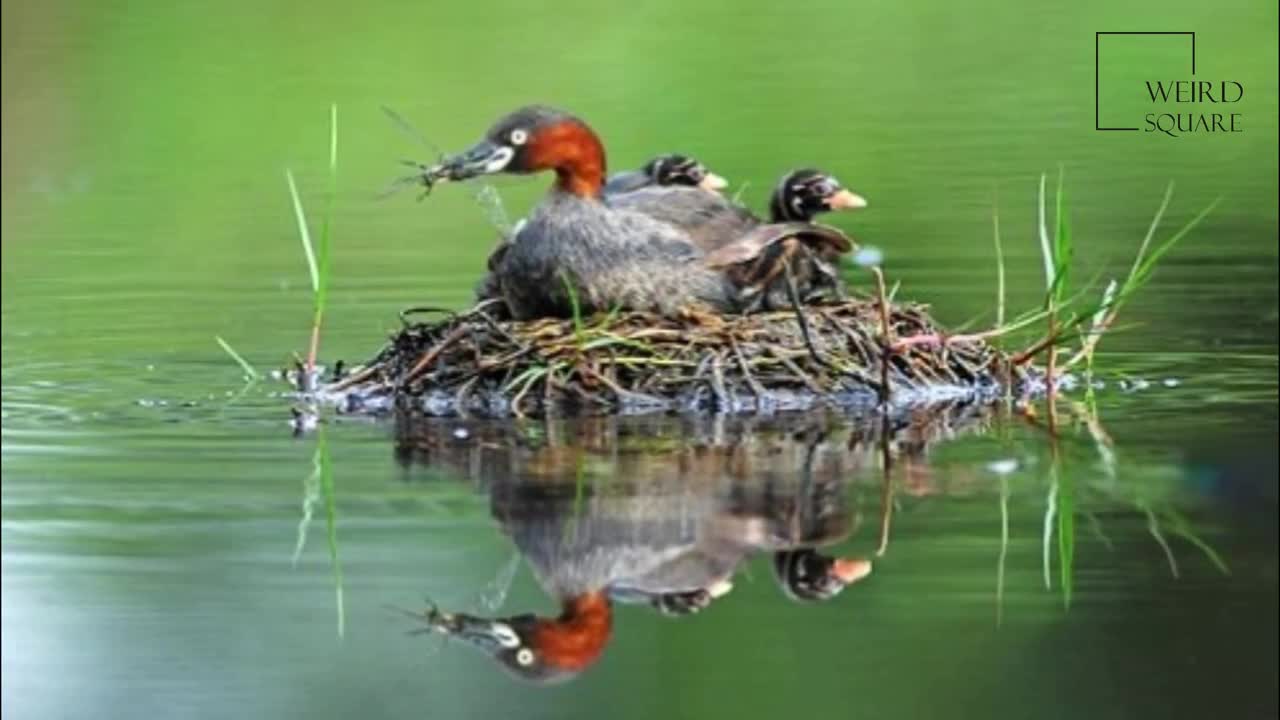Premium Only Content

Interesting facts about little grebe
scary, funny, fascinating, interesting and amazing things | facts in the world.
The little grebe also known as dabchick, is a member of the grebe family of water birds. The genus name is from Ancient Greek takhus "fast" and bapto "to sink under". The specific ruficollis is from Latin rufus "red" and Modern Latin -collis, "-necked", itself derived from Latin collum "neck"
At 23 to 29 cm (9.1 to 11.4 in) in length it is the smallest European member of its family. It is commonly found in open bodies of water across most of its range.
The little grebe is a small water bird with a pointed bill. The adult is unmistakable in summer, predominantly dark above with its rich, rufous colour neck, cheeks and flanks, and bright yellow gape. The rufous is replaced by a dirty brownish grey in
non-breeding and juvenile birds.
Juvenile birds have a yellow bill with a small black tip, and black and white streaks on the cheeks and sides of the neck as seen below. This yellow bill darkens as the juveniles age, eventually turning black in adulthood.
In winter, its size, buff plumage, with a darker back and cap, and "powder puff" rear end enable easy identification of this species. The little grebe's breeding call, given singly or in duet, is a trilled repeated weet-weet-weet or wee-wee-wee which sounds like a horse whinnying. The little grebe is an excellent swimmer and diver and pursues its fish and aquatic invertebrate prey underwater. It uses the vegetation skilfully as a hiding place.
Like all grebes, it nests at the water's edge, since its legs are set very far back and it cannot walk well. Usually four to seven eggs are laid. When the adult bird leaves the nest it usually takes care to cover the eggs with weeds. This makes it less likely to be detected by predators. The young leave the nest and can swim soon after hatching, and chicks are often carried on the backs of the swimming adults. In India, the species breeds during the rainy season. It does not normally interbreed with the larger grebes in the Old World, but a bird in Cornwall mated with a vagrant North American pied-billed grebe, producing hybrid young
-
 8:52
8:52
The Gun Collective
6 hours agoWhat THEY won't tell you .... Griffin Mk2 PCC Honest Gun Review
407 -
 UPCOMING
UPCOMING
VOPUSARADIO
5 hours agoPOLITI-SHOCK! "DROP THE HAMMER OF JUSTICE" W/ US Senate Candidate Reagan Box & Hollis Mahady
31 -
 LIVE
LIVE
Sarah Westall
1 hour agoPDiddy Trial Exposes Domestic Violence while Protecting Deeper Corruption w/ Attorney Joe Nierman
229 watching -
 LIVE
LIVE
Athlete & Artist Show
7 hours agoStanley Cup Final WATCH PARTY
137 watching -
 LIVE
LIVE
SpartakusLIVE
3 hours agoAre they really going to end WZ?? || Duos w/ @GloryJean
155 watching -
 17:03
17:03
Tundra Tactical
1 hour agoAntigun Groups Are HIDING the Truth from You!
5.05K1 -
 LIVE
LIVE
Josh Pate's College Football Show
6 hours ago $0.06 earnedCFB’s Big Changes | SEC Schedule Release | Big Ten QB Rankings | Honeymoon Takeaways
39 watching -

AirCondaTv Gaming
3 hours ago $0.09 earnedJump Ship: Demoing in Space with JFG & the Gang (Collab)
3.27K -
 1:32:28
1:32:28
The Daily Signal
1 hour ago $1.95 earned🚨 BREAKING: ISRAEL CURRENTLY STRIKING IRAN
11.7K3 -
 LIVE
LIVE
GloryJean
1 hour ago#1 Gamer Dad Dominates on MnK 🖱️
18 watching